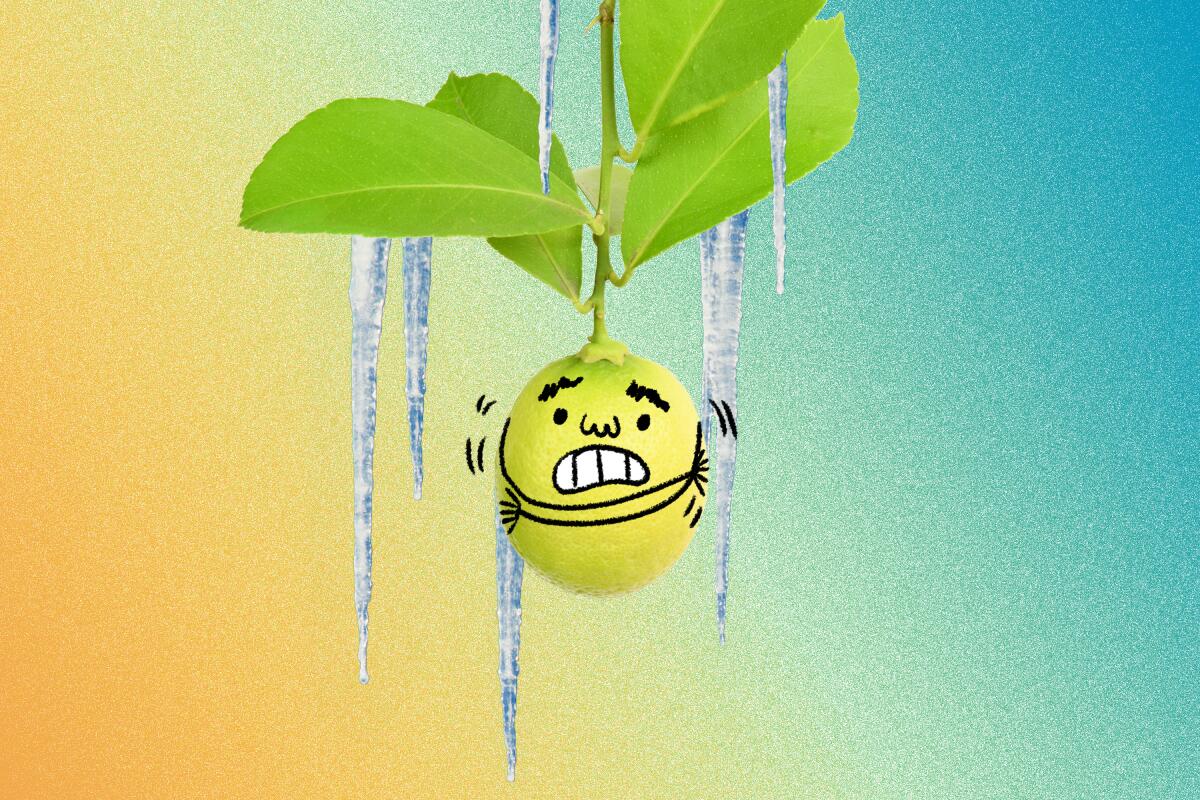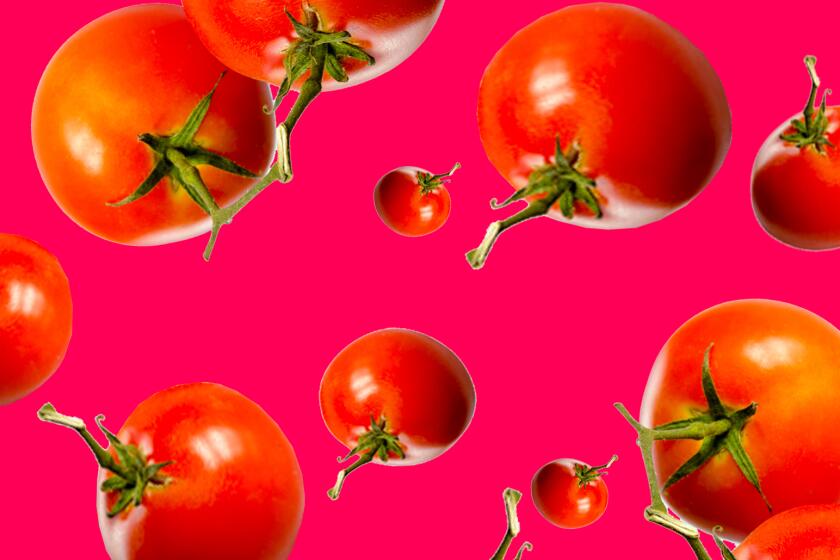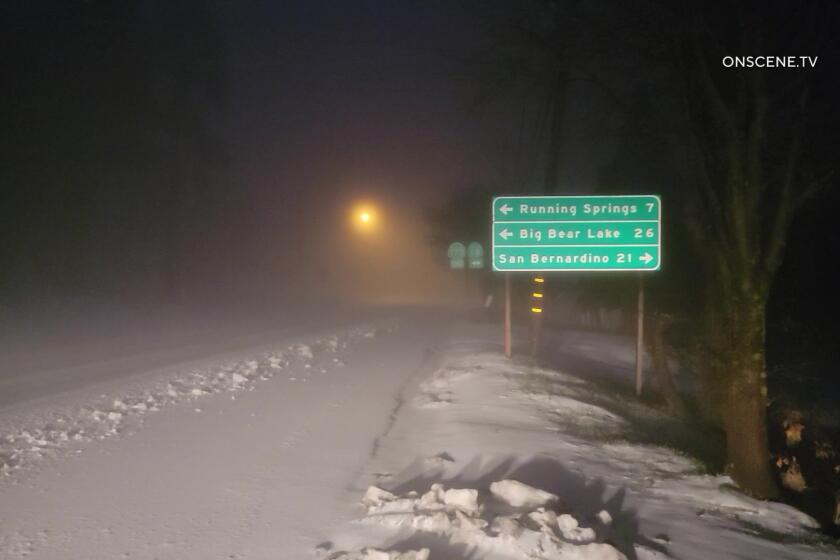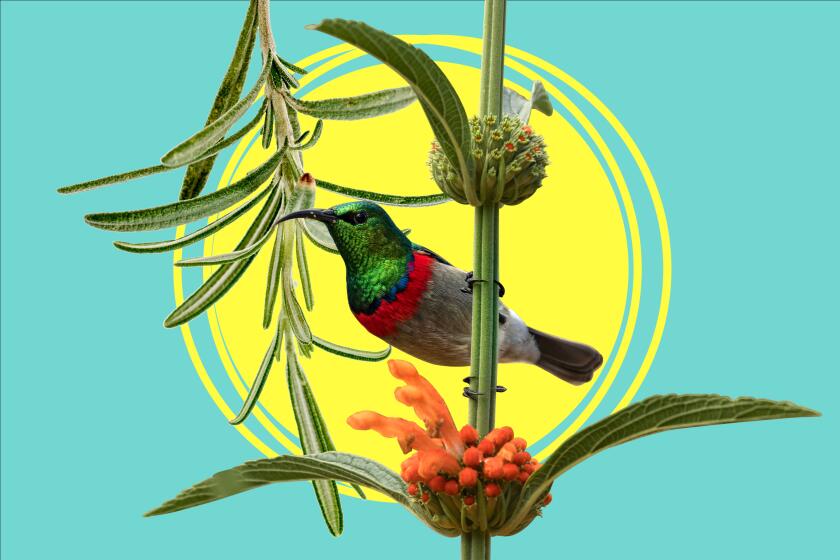SoCal plant people: Here’s how to prepare for this week’s frosty winter storm

- Share via
Temperatures are predicted to dip into the low 30s in some inland regions of Southern California this week, so if you’re worried about frost damaging blooming fruit trees and other tender plants, stop fretting and start watering, say horticulture experts.
“There’s nothing really you can do [to protect budding trees from frost] except make sure they’re well watered,” said Yvonne Savio, a longtime master gardener who ran Los Angeles County’s master gardener program for 25 years. “If the roots are nice and plump from moisture, that’s the safest way for trees to get through any low temperatures.”
Savio and Don Hodel, a landscaping and horticulture advisor for UC Cooperative Extension, said they aren’t too worried about the predicted cold snap, even though unseasonably warm temperatures a few weeks ago goosed many plants into thinking it was spring and starting to bloom.
A craft cannabis cultivator shares his challenges — and a glimpse into his biodynamic, off-the-grid farm
Most places in Southern California won’t see temperatures much below 40, Savio said, especially along the coast, but some inland areas could start “nudging frost” in the early hours of Wednesday and Thursday, according to weather forecasts.
Canyon floors and valley bottoms can see temperatures dip into the freezing range (32 degrees) even when it’s in the 40s in most other areas because cold air settles at the lowest point it can find, just like water, says Hodel.
Luckily, wind is expected to accompany the cold air, Hodel said. Wind helps mix up the cold air with warmer air above, reducing the chance of frost, Hodel said. But on windless, clear nights, if you live at the bottom of a canyon or your backyard is mostly slope, where cold air can settle and get trapped by your house, there are a few things you can do to protect young or tender plants against damage from the cold.
1. Check your local weather forecast for signs of frost
The last really bad frost in Southern California was in January 2007, Hodel said, when a multiday cold snap severely damaged crops in Central and Southern California. Most weather reports will note if frost is expected, especially in wind-protected areas of the valleys.
Tomatomania! is back in Los Angeles, Orange and San Diego counties for 2022. Here’s where to buy hundreds of unique varieties of tomatoes and peppers.
“I always look at the weather. If it’s a clear, dry day with no wind, and the high temperature stays in the 50s, there’s a good potential for frost that night. But it has to be dry,” he said, adding: “Dry air loses heat, but water holds a lot of heat, so if it rains and stays in the 50s, it will probably stay in the 40s that night because the air is so moist.”
2. Water your plants before a cold snap
Make sure your plants aren’t water-stressed going into a cold period. Savio and other gardeners recommend watering your plants thoroughly before a cold snap, but Hodel says the best prevention is just consistent tending of your plants in the winter. Plants need less water in the winter, and you don’t want to overwater, but if it hasn’t been raining, make sure your plants don’t dry out.
And if you suspect frost is heading your way, break out the hose ASAP, Savio said, to give your plants a good drink and plump up their roots to withstand the coming cold. “And even if they can’t water before the frost, water immediately after or as soon as they can, to help the roots survive whatever damage they have.”
The coldest storm of the season made its entrance in Southern California on Tuesday, dumping sleet and snow in high mountain areas.
3. Move potted plants to a covered area
If you’re worried about frost, move your potted plants under an overhang, a covered patio or into the garage, any place they have some cover, Hodel said. On still, cloudless nights, plants radiate heat into the clear sky and can become colder than the radiant air temperature. A covered patio will help bounce that warmth back to potted plants.
Use a vented cardboard box for larger plants or a gallon milk jug to protect seedlings (rinse out, cut off the bottom of the jug to fit around plants, and be sure to remove the cap so plants can breath). Or invest in frost cloth, a lightweight synthetic cloth that helps hold in a plant’s heat.
Be wary of using plastic, sheets or heavier fabrics, because they can actually conduct cold to the leaves and do some damage, Savio said. Good news: If your plant is too big for a frost cloth, chances are it will survive a frost without too much damage, especially if it’s been well watered, Hodel said.
Drought-resistant plants like hummingbird sage and rosemary are the ideal addition to Southern California gardens.
4. Pull out a box fan
This week’s cold snap is expected to include some wind, but if it starts getting frosty and the air is still, consider hooking up a fan outside. Anyone who grew up near orange groves will remember the roar of wind machines starting in the dead of night, when the temperature got too cold. The same theory applies here, especially if you have an area where cold air can settle and be trapped by your yard or fence.
Cold air falls straight down on a still night, Savio said, so a box fan will help mix it up with warmer air, especially if it’s near a wall that absorbed heat during the day.
5. Leave damaged plant parts alone
Plants are heartier than we think, Hodel said. Cold-damaged plants may look bad, but postpone your pruning until March, when the danger of more frost is past. The damaged branches are actually protecting the rest of the plant from further damage, Savio said, and they might yet revive when the weather turns warm.
“People want their plants to look neat, but I tell them to just leave the dead stuff until they see new growth, because the damaged tissue is a buffer against further damage.”
More to Read
Sign up for The Wild
We’ll help you find the best places to hike, bike and run, as well as the perfect silent spots for meditation and yoga.
You may occasionally receive promotional content from the Los Angeles Times.















